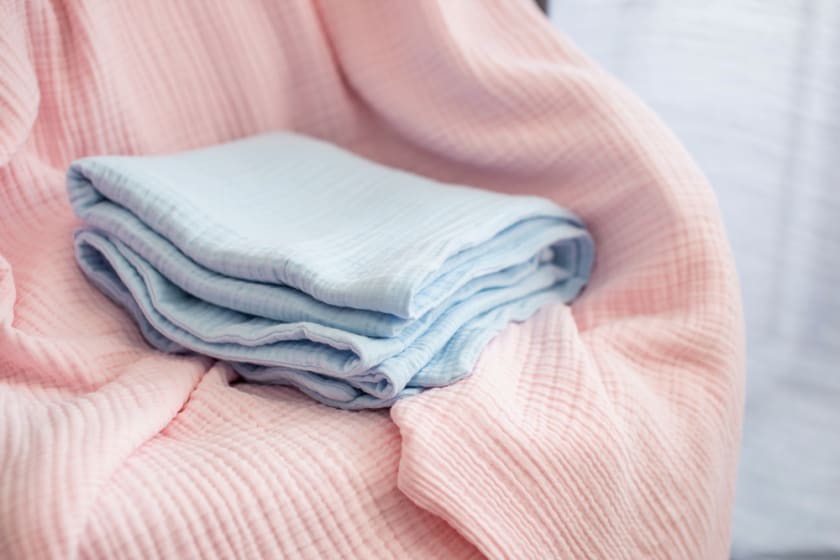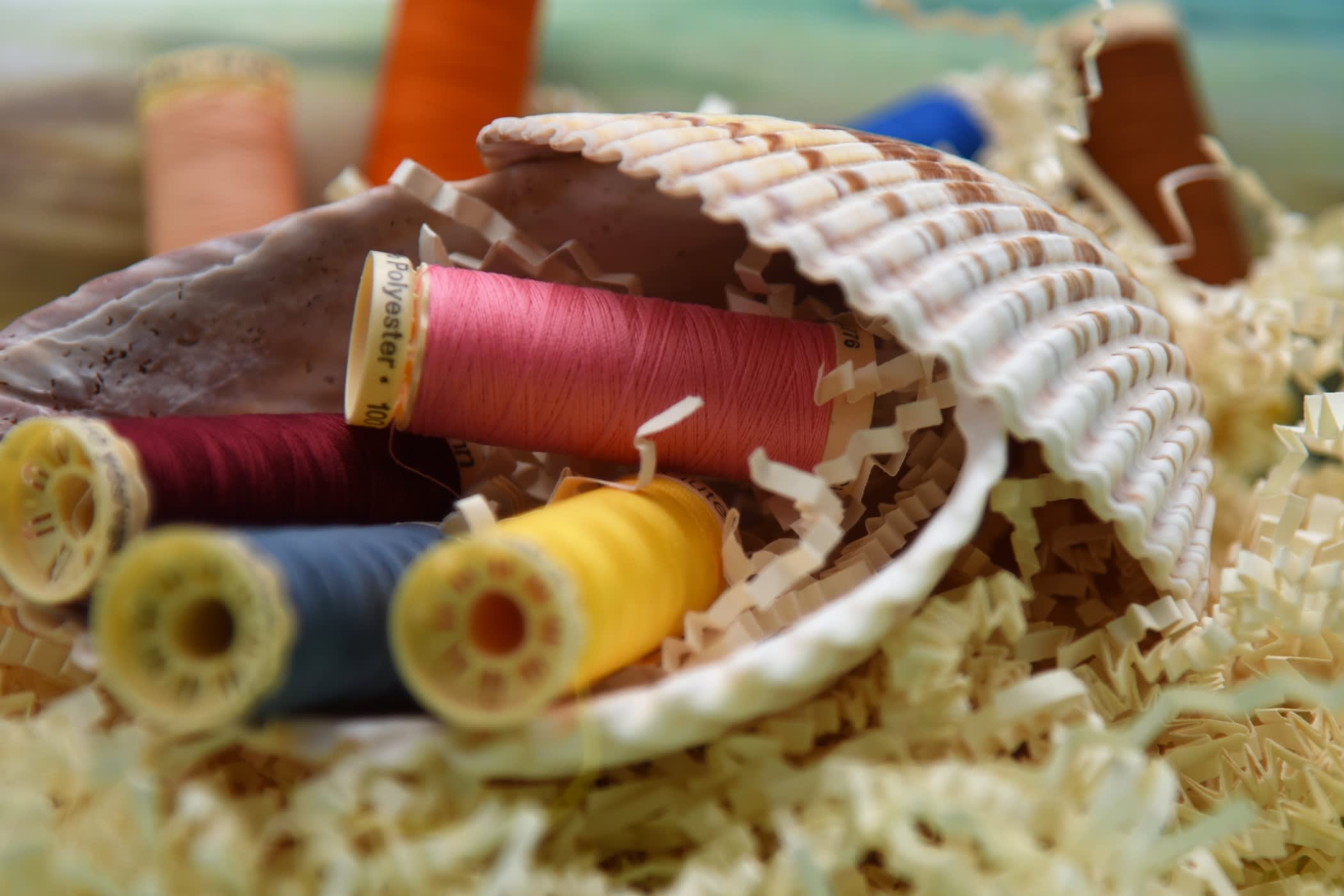Everything You Must Know About Muslin and Its Revival



Muslin: The Dream Fabric
As a designer, one tends to keep pushing the boundaries of what they can achieve with their designs as well as the fabrics they use. Imagine being able to work with a fabric that is so light that it is called “woven air”. The fabric is so soft that entire dresses made out of it can pass through a finger-ring. The texture of the fabric is so light that irrespective of the number of layers you use, it still remains translucent! Surely this fabric is fit for dressing the angels (if they exist, of course) and not just mere mortals.
If you describe such a fabric to someone, they may call it your foolish fantasy. But surprise them by telling them that such a fabric actually existed. That too, more than two centuries back! In a world without the aid of technology that is available today, such a dream fabric existed. Unsurprisingly, it was a favourite among the royals and aristocrats who could afford it. Yes, we are referring to the muslin cloth from Bengal.
The properties of the muslin cloth earned it many names – woven air, flowing water, morning dew, and pleasing to the eyes – to list a few. The delicate handmade fabric was so popular in the years gone by that it was one of the major imports to Western countries. Specialised artisans from the current day Bangladesh were the magicians behind creating this dream fabric. To date, the “Dhakai malmal”, or the muslin cloth from Dhaka, is a stuff of legends in the fashion industry.
Here are some astonishing facts about this legendary fabric.
- The yarn of the muslin cloth reportedly measures 500 metric counts and above, with some yarns reaching up to 1000 metric counts. To put that in perspective, a Jamdani silk saree today measures anywhere between 50-80 metric counts, and the finest cloth in the world has approximately 300 metric counts.
- The reputed muslin cloth from Dhaka was made from a specific variety of cotton that was grown in the areas to the south of Dhaka. This specific variety of cotton has now been extinct for over 170 years.
Making Muslin Cloth: The Lost Art Form
Making a fabric with such characteristics is in itself an intricate art form. This is why the weavers who made the fabric were considered artisans instead of just weavers. They passed on the knowledge of making the most sophisticated muslin cloth from generation to generation like an art form. However, with the colonisation of the country and the increased push towards machine-made cloth from British textile mills, the art form was slowly destroyed.
The efforts, skills, and time required to make a single muslin cloth garment like a saree takes months at a time. By contrast, the mass-produced cloth from the factories in the West was used to flood the markets and push the muslin weavers to poverty and ruin. While colonial rule came to an end so many decades ago, the art form of making muslin cloth was lost more than 200 years back.
Reviving the Craft
The muslin cloth has not just been a proud part of the heritage of Bangladesh; it was also a major contributor to the economy of the region. Partially motivated by the historical legacy and partly by the promise of economic growth, researchers, designers, and scientists in Bangladesh have been trying to recreate the fabric.
The search for a method to recreate the famed Dhakai muslin cloth had been an individual quest for a long time. But in the year 2018, a research team was formed under the guidance of the Honorable Prime Minister of the country. The team is entrusted with the task of recreating the glorious past of the country by being able to revive the lost art form of making the muslin cloth.
Treasure Hunt
A research team was made with different wings, each looking at a different aspect of the process like finding the right raw material, studying the finished fabric, and yet another wing looking at skilling the weavers with the know-how of making the fabric.
Each of these wings had its unique set of problems. There was no sample of the original fabric available anywhere in the country that could be studied for its characteristics. The team advertised multiple times in the country for nearly 8 months before they visited the Victoria and Albert Museum in England, where they could find a sample that they were able to study.
The team working with obtaining the raw material faced a different type of challenge – the specific variety of cotton that was used to make the muslin cloth has been extinct for over a century. However, through careful studies and a stroke of luck, the team was able to locate a variety of the species locally known as Phuti Karpas. While this variety is still not the exact variant, it is the closest one can get to the original raw material.
For the skilling team, the challenges were on a different level altogether. There was no artisan available with the know-how of making the delicate muslin cloth. There was no documentation available on the process, as this was knowledge passed as a family tradition, and there were no looms available to weave the fabric. On top of this, the Phuti Karpas variety of cotton is notorious for the difficulty of spinning it into yarn. There are many factors like the softness of the weaver’s hands and the moisture in the atmosphere that can cause breakage of the thread.
With all the factors weighing against them, the task of the team appeared to be a treasure hunt. The treasure awaiting them at the end of the hunt was the muslin cloth. The question everyone asked was whether the team would be able to recreate the lost magic?
The Light at the End of the Tunnel
With dedicated efforts and many innovative problem-solving approaches, the team was finally able to recreate the fabric in the lab. The ecstatic team members confirmed that they were able to create a fabric that measured 500 metric counts – a great achievement undoubtedly. Beginning with a mad hunt for a piece of original muslin cloth to finding only one weaver out of 2000 who agreed to go through the difficult upskilling process, to finally being able to recreate the dream fabric, the team’s achievement calls for celebration.
The feat is being celebrated by researchers, scientists, historians, and most importantly, fashion designers in the country and overseas. The revival of the muslin cloth has the potential to become a turning point in the economic history of Bangladesh. This is why it is being watched carefully by industry members and observers.
Looking Forward
Having been able to recreate the fabric on a small scale, the next logical step is to scale up the production to huge quantities. The fashion industry in Bangladesh and the world over is optimistic about the revival of the muslin cloth from Dhaka. However, this achievement comes with a few concerns, as mentioned ahead.
- The intricate process of making the muslin cloth makes it an extremely time-consuming process. Given the softness of the fabric and its delicate nature, it can only be made manually. Attempts to make it on a machine will result in the snapping of the thread or reduce the quality. Making each piece by hand is undoubtedly an extremely time taking procedure.
- With the efforts and time required to make muslin cloth, it becomes obvious that the fabric will be extremely expensive. While the economic advantage of the fabric lies in its high price, it also means that muslin cloth can never be a mass product. It will be catering to a niche audience that can afford to buy the fabric.
With these constraints in mind, the research team is now working towards the most feasible option to scale up the production of the muslin cloth. Supported by the investment from the government, revival muslin is the thing to watch out for in the Bangladesh fashion industry. It certainly will leave its footprints on the global fashion world as well.
Wrapping Up
Through this article, we discussed the dream fabric that was one of the highest-selling fashion items nearly two centuries ago – the Dhakai muslin cloth. We also discussed why it is called a lost art form and why so much effort is being put into reviving this lost art form. You also got to know about some of the challenges faced by the researchers looking to revive the muslin cloth and their eventual success. As a fashion brand, it is important for you to know what is happening in the fashion industry, not just in your country but globally as well.
Interacting with industry peers and thinkers is a great way to learn about these trends. Fashion Expos and trade events present opportunities for people from the industry to get together and discuss the progress made. Online communities dedicated to the fashion industry also facilitate such discussions. In the era of digitalisation, these online communities will be a big part of how the industry operates and innovates.
Fashinza is one such only community waiting for you. An end-to-end B2B platform for the fashion industry, Fashinza helps you find peers, suppliers, and manufacturers. You can also find other brands to collaborate with. Through Fashinza, you can find the materials you are looking for, place an order, and get them delivered to your facility. To find more information, and become a part of the community, visit the Fashinza website or app today.



















